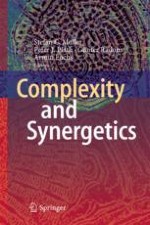2018 | OriginalPaper | Buchkapitel
Understanding Earth: The Self-organization Concept and Its Geological Significance; on the Example of Liesegang-Structures and Electric Fields
verfasst von : Sabine Dietrich, Karl-Heinz Jacob
Erschienen in: Complexity and Synergetics
Aktivieren Sie unsere intelligente Suche, um passende Fachinhalte oder Patente zu finden.
Wählen Sie Textabschnitte aus um mit Künstlicher Intelligenz passenden Patente zu finden. powered by
Markieren Sie Textabschnitte, um KI-gestützt weitere passende Inhalte zu finden. powered by
